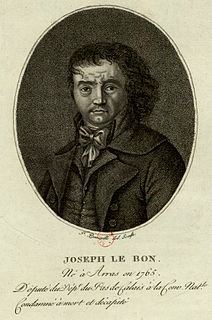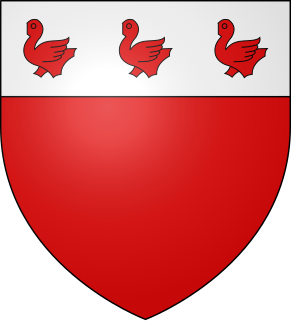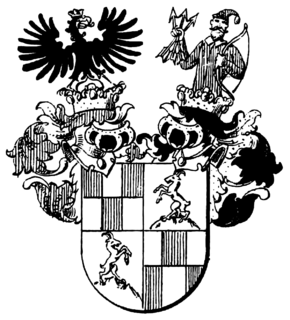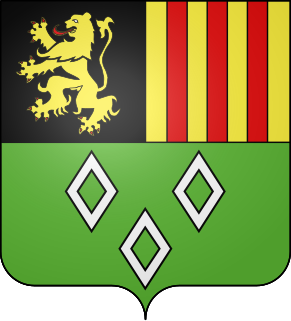
The Marquess of Becelaere is a former French title, now extinct. Becelaere, in Flanders, is an old spelling of Beselare, in Zonnebeke.

The Marquess of Becelaere is a former French title, now extinct. Becelaere, in Flanders, is an old spelling of Beselare, in Zonnebeke.
The title was created for Maximilien-Emmanuel de la Woestyne, 1st Marquess of Becelaere (1660-1729) in 1705 by Louis XIV. His ancestors, the house of la Woestyne, had long possessed the Flemish lordship of Becelaere. The title was passed by male primogeniture. For over 400 years the family inhabited Beselare Castle.
Maximilien III Emmanuel de la Woestyne, 1st Marquess of Becelaere :
married to Louise Eugénie de Melun, granddaughter of Charles de Ligne, 2nd Prince of Arenberg .

Princely Count Charles of Arenberg, duke of Aarschot, baron of Zevenbergen, knight of the Order of the Golden Fleece, was the second Princely Count of Arenberg and a leading aristocrat of the Habsburg Netherlands, who served as a courtier, soldier, minister and diplomat.

Joseph Le Bon was a French politician.

The House of Hornes was an important European noble family, which became extinct in the male line in 1826. The name refers to Horn, a small village in Limburg, located in the Netherlands.

The Marquess of Lede was a Flemish title in use during the Ancien Régime. Lede is a city in Flanders, Belgium.

Van de Werve is the name of one of the oldest noble families from Antwerp that is still in existence.

d' Ursel is the name of an important old Belgian noble family of German origin. The chief of the House is styled the Duke of Ursel, others are Count d'Ursel.
The House of Bethune is a French noble house from the province of Artois in the north of France whose proven filiation dates back to Guillaume de Béthune who made his will in 1213. This family became extinct in 1807 with Maximilien-Alexandre de Béthune, duke of Sully.

Cobenzl was an Austrian noble family from Carinthia. They had the bulk of their possessions in present-day Slovenia and had an important role in the history of Carniola and the County of Gorizia. Several of its members served as diplomats for the Habsburg rulers.

Lalaing is a noble family from the south of Flanders which played an important role in the history of the County of Hainaut and of the Netherlands.

De Lannoy is the name of a noble family that takes its name from the French town of Lannoy, Nord. The name comes from l'Annoy which means «the alderwood» in Picard French of Flanders.
Count van der Noot is a title created by Emperor Charles VI on 16 May 1716. Since then this title belongs to the Belgian nobility.

Marquess of Rode is a former title of the Belgian nobility, now extinct. Rode is a former part of Schelderode in Flanders.
François III Maximilien de la Woestyne, 3rd Marquess of Becelaere, Grande of Spain and Lord of Walincourt, died in Cambrai 12 May 1794, was a victim of the French Revolution.
Charles Emmanuel Joseph, 1st Prince de Gavre, 4th Marquess of Ayseaux, Count of the Empire was the first Prince de Gavre, created by Emperor Charles VI in 1736. He was the son of Rasse II François of Gavre, 3rd Marquess of Ayseau, and Marie Catherine de Brias.

Glymes was a noble house of Belgium, of descendants of a bastard branch of the Dukes of Brabant. Glymes or Glimes is a municipality of Incourt. Their descendants of the branch of Grimberghen are styled as the Prince de Grimberghen.

Coloma or de Coloma or Colomba is an old important Spanish Noble House. A branch belongs to the Flemish nobility, and became the Counts of Bornhem. Other branches became the Counts of Elda, Marquesses of Espinar, Marquesses of Noguera and Marquesses of Canales de Chozas.
Marquess of Saint-Floris was a French noble title, belonging to the Picardian nobility. Saint-Floris is a town in former Flanders.
Roger-Wauthier van der Noot born 27 /2/1644 was the Lord mayor of Brussels, he became the 1st Baron of Carloo.
The Lords of Ayseau(x) belonged to the feudal nobility of Brabant.
Van de Woestijne is a Flemish surname. Notable people with the surname include:
| This Belgium-related article is a stub. You can help Wikipedia by expanding it. |